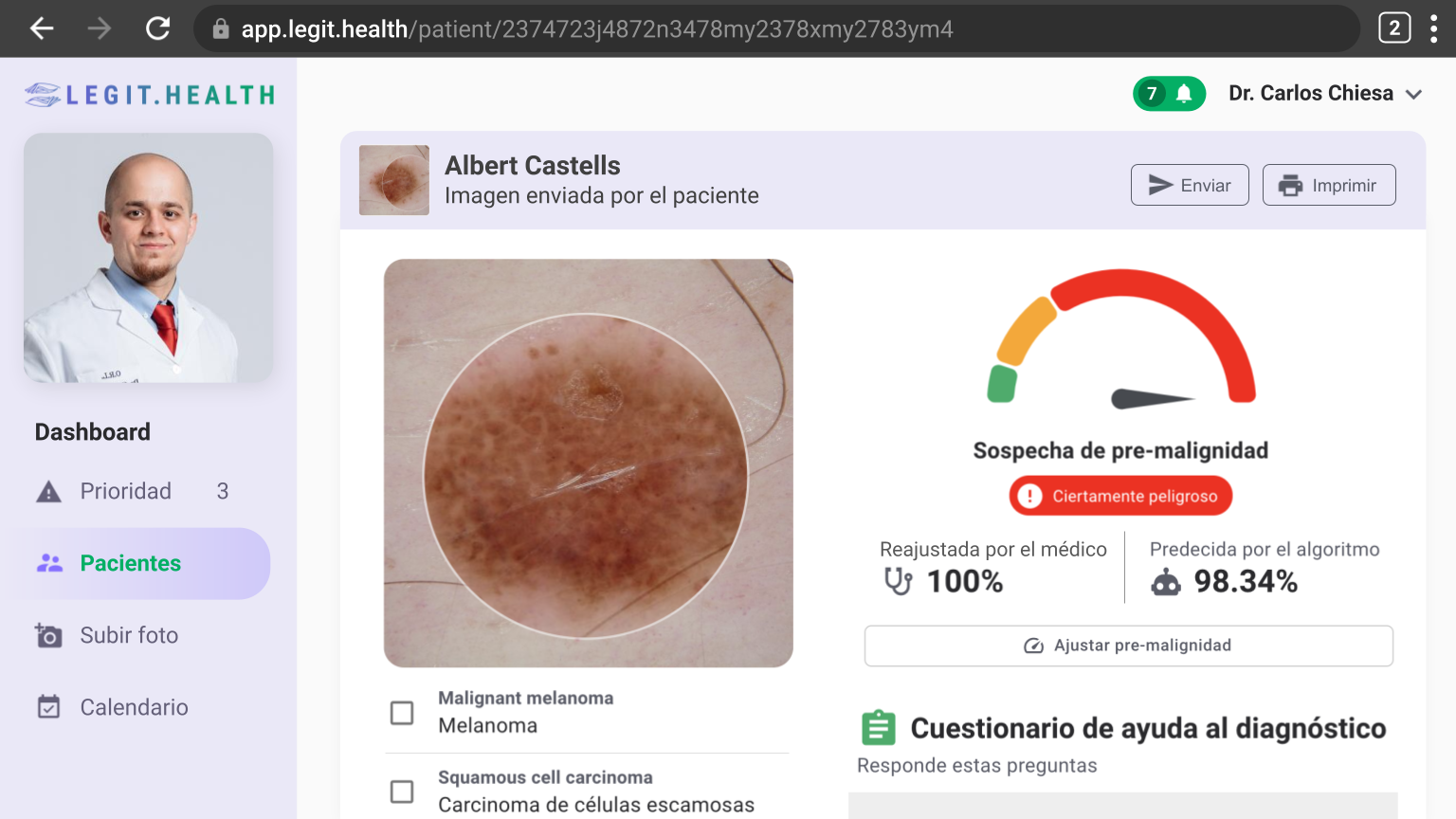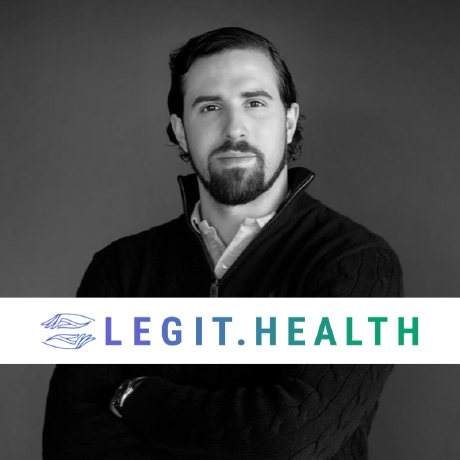Are there enough dermatologists for everyone? A hard-to-solve crisis
Years ago Andy Aguilar noticed something wasn't right with her skin. When she visited her doctor looking for a solution, she was met with an ordeal.
She was passed around from specialist to specialist, collecting incorrect diagnosis after incorrect diagnosis and taking the brunt of the consequences of the misguided treatments that came with them as her frustration with her healthcare providers grew.
Each new appointment with a new dermatologist came with its ever-extending waiting period as her symptoms worsened before her eyes.
After several years, many healthcare providers and six different dermatologists later, she found the diagnosis and treatment she needed, but rebuilding the trust in the healthcare sector took much longer.
Like Andy, thousands of patients all over the world face the same hurdle, feeling alone and forgotten by both the public and private healthcare sectors as their chronic condition worsens with each day.
Experts agree: there is a shortage of dermatologists, and this leads to longer waiting times for patients, overworked doctors, untreated conditions, or even patients needing to travel to a different city to get treatment.
Considering the severity of this issue, it is important that the key decision-makers in the medical industry ponder two crucial questions: Why is this happening, and how can we fix it?
Andy went on to found Legit.Health to reduce the number of people who had to live through this kind of ordeal, by helping doctors and medical centres become more efficient, so they can help their patients even better.
Why is it so hard to get a Dermatology appointment?
The truth is that there are not enough dermatologists for all of us. A Spanish patient reports a primary care doctor telling them "I will refer you to the specialist, I hope you have luck and get seen before it is too late" when they went to the medical centre with worrisome spots on their skin.
The demand is growing, the number of doctors is not
One of the main causes of this problem is not related to the number of dermatologists but to their workload.
The rate at which a dermatologist can be trained cannot be cut. Especially in a field as complex as this one, full of rare conditions and fringe cases to keep in mind. Nowadays, a board-certified dermatologist needs 12 years of extensive and specialized training and experience to be able to perform their job.
Meanwhile, the population of dermatologists has kept growing at a reasonable rate, the demand for their attention has skyrocketed in recent years, making the number of consultation requests grow exponentially and overflowing a system that was not ready to assume this growth.
Traditional consultation
8 medical acts per hour
With Legit.Health
52 medical acts per hour
One of the reasons the demand for dermatologists keeps increasing is the wide array of treatments and services they can provide. Dermatology is the field of medicine that focuses on treating the skin, hair, and nails; all usually affected by quite noticeable conditions that affect people's daily lives.
Aside from treating medical conditions for people of all ages, dermatologists can also conduct cosmetic procedures, so their patients can look and feel great, and the demand for this kind of procedure only grows as the years go by.
¿Quiere ver la tecnología de IA dermatológica en acción?
Efficiency is trending down, burnout is trending up
Another worrying trend in the medical world is the ever-growing amount of time doctors need to spend on menial tasks and the burnout and decline in efficiency it brings. After all, the doctor has dedicated years of training to be able to help people, and spending time performing tasks that seem unimportant can be quite frustrating for the practitioner and a very bad investment for the medical centre.
This is especially true in dermatology, where they often need to linger counting lessons or calculating affected area and severity scores instead of actually interacting with the patient and understanding their reality.
The implementation of new tools, like Legit.Health, which reduces the time spent on these tasks, is a fundamental step to allow dermatologists to use their time more efficiently from both a medical and monetary point of view.
Additionally, the use of this kind of software reduces considerably the feeling of burnout, as access to the best tools will allow doctors to focus on building up the human connection with their patients, letting the algorithms count lesions and calculate surface areas.
The pressure of over-specialization
The medical profession is one of the more specialized fields in the world, as some cases need expert knowledge not only in the field of choice but in the specific disease the patient is suffering.
This over-specialization is an especially impactful problem in the case of primary care physicians, who have to confront a wide range of potential diseases without the tools to properly diagnose or treat them due to a lack of specialized knowledge.
Legit.Health puts in the hands of doctors the consolidated expertise of top experts in each disease, combined with all the processing power of our deep learning algorithms, giving a faster and more reliable second opinion there is.

This is useful to both the primary care doctors who will benefit from having access to an objective and fast way of accessing the knowledge of a top dermatologist without investing too much time in consulting manuals, and for the dermatologist who might encounter a disease or lesion out of their expertise and want a reliable tool to confirm their suspicions.
In both cases, the pressure of needing to know it all is reduced, as is the time lost deriving a patient to another doctor or conducting additional tests just to confirm a suspicion.
¿Quiere ver la tecnología de IA dermatológica en acción?
The dire consequences of this shortage
Every expert in the medical field agrees: if measures are not taken at every level, this shortage will get worse as time passes.
The first consequences of the issue are starting to be felt by medical centres around the world, being patient dissatisfaction the most notorious one. Patients who are frustrated with the slow pace of a waiting list not only might take their business to another healthcare provider, but more importantly, might get the impression that their symptoms might not be important, and forgo completely the search for treatment.
This links with other of the issues caused by these long waiting periods: Conditions that could be easily treated if caught in time, quickly develop into acute cases that will take a bigger effort and resources to treat.
¿Quiere ver la tecnología de IA dermatológica en acción?
Solutions, step by step
A complex problem like this can't be solved in one single swift action. It takes a complete overhaul of the medical system and how we understand dermatology to change a situation as ingrained as this one.
Nevertheless, we should not succumb to resignation, accepting eternal waiting lists and overworked doctors. There are small changes that can be done that will improve the situation and can be the first steps towards a better future.
One of those solutions is to give doctors the best tools to optimize their time and energy when seeing a patient, making sure they are not overworking themselves with tools developed before the internet existed.
Get access now
Empieza ahora
Dermatología con IA validada por investigación revisada por pares. De confianza en los principales hospitales de Europa. Rellena el formulario para ver cómo nuestra plataforma con marcado CE puede transformar tu práctica.



